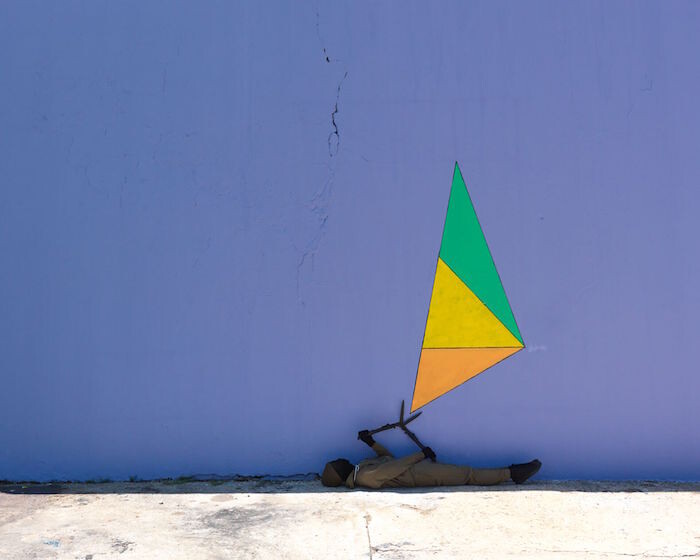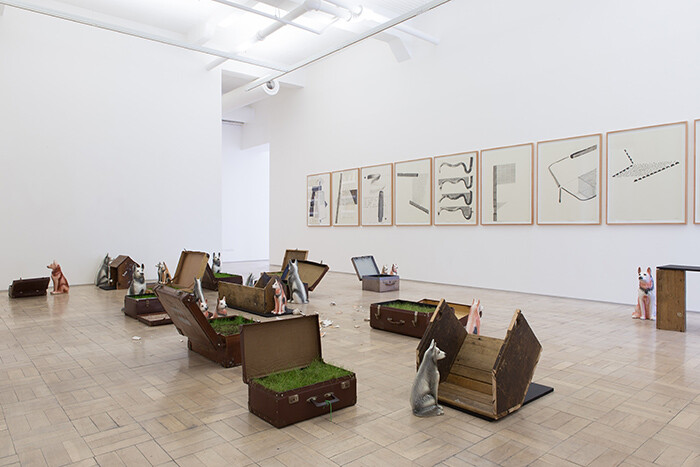Categories
Subjects
Authors
Artists
Venues
Locations
Calendar
Filter
Done
November 2, 2023 – Review
Jo Ractliffe’s “Landscaping”
Sean O’Toole

Jo Ractliffe has for decades been photographing the charged and ravaged landscapes of her native South Africa. For nearly as long, she has bristled at the insufficiency of the art-historical term “landscape” in encapsulating her interest in terrains where histories of occupation, use, conflict, and violence do not obviously declare themselves. Sometimes, and only partly in jest, she has used the term “blandscape” to characterize her abstruse images of nothing much in particular, be it a locked gate to an Apartheid-era torture site or desert landscape linked to a forgotten Cold War battleground. Last year, when Ractliffe was shortlisted for the 2022 Deutsche Börse Photography Foundation Prize, she repeated this dislike, describing landscape as a “difficult term,” more descriptive of an outlook or prospect than a space or place. “I think of [landscape] less as a ‘subject’, or genre,” she adds, “than the medium through which I can explore questions of violence, conflict, and memory.”
Ractliffe’s new exhibition “Landscaping,” her first major statement since her 2020 survey exhibition at the Art Institute of Chicago, extends her interest in land as tangible fact and immanent subject. It is a remarkable career statement. Her thirty-four black-and-white photos, the majority taken over the …
February 24, 2017 – Review
Robin Rhode’s “Paths and Fields”
Sean O’Toole

Berlin-based Robin Rhode’s third solo exhibition with Stevenson is an accomplished recapitulation of ideas and gestures that have featured in his mature practice since leaving South Africa in the mid-2000s. Rhode’s work is grounded in repetition, notably his Eadweard Muybridge-like photo animations, which here include Paradise (2016) and Inverted Cycle (2016). These sequentially choreographed still performances incrementally explore a concise narrative, here to do with color theory. But when does formal repetition become empty rehearsal? The question lingers in the interstices of this polished show, which is composed of drawings, sculpture, photographs, and films. The loose choreography of the works allows for an episodic encounter, or, to improvise on the show’s title, suggests various paths and routes to an answer.
The atomized form of “Paths and Fields” also offers a flashback to curator Stephanie Rosenthal’s layout of the artist’s 2008 London debut, “Robin Rhode: Who Saw Who” at the Hayward Gallery, a heterogeneous showcase grounded in Rhode’s evolving interests in street culture—notably skateboarding and graffiti—and various postwar avant-gardes. The Hayward show was notable for including early examples of the artist’s abstract paintings and drawings, which here retain their hesitant, gee-whiz quality. Works on White Paper IV (2008), an oil stick drawing …
February 9, 2015 – Review
Kemang Wa Lehulere’s "To whom it may concern"
Nancy Dantas

If mourning is a working-through of past history, a process that, if effective, results in a letting go, then South African-born Kemang Wa Lehulere embodies the melancholic, the subject who refuses to release the lost object; a grieving subject whose pain knows no end.
When considering the work of Kemang Wa Lehulere, it seems he too belongs to a long tradition of artists born under Saturn. His oeuvre consistently maintains a multitude of links to the past and his current exhibition at Stevenson Gallery in Cape Town is no exception, standing as an example of a tangled, febrile, visual story told in parts. Densely populated, perhaps in excess, by the plethora of mediums he uses—ranging from sculpture and photography to large oneiric chalk drawings on walls, to works on paper and smaller, alternately protruding blackboards with further drawings—the artist exhumes the ruins of Apartheid, digging into the compacted sands of history as he literally does in the video piece Homeless Song 2 (2015). In this work, a shirtless Wa Lehulere uses a rather fragile-looking music stand as a tool to displace the fine yellow dust on a privately-owned Johannesburg mine dump. The act comes to an abrupt end with the arrival …